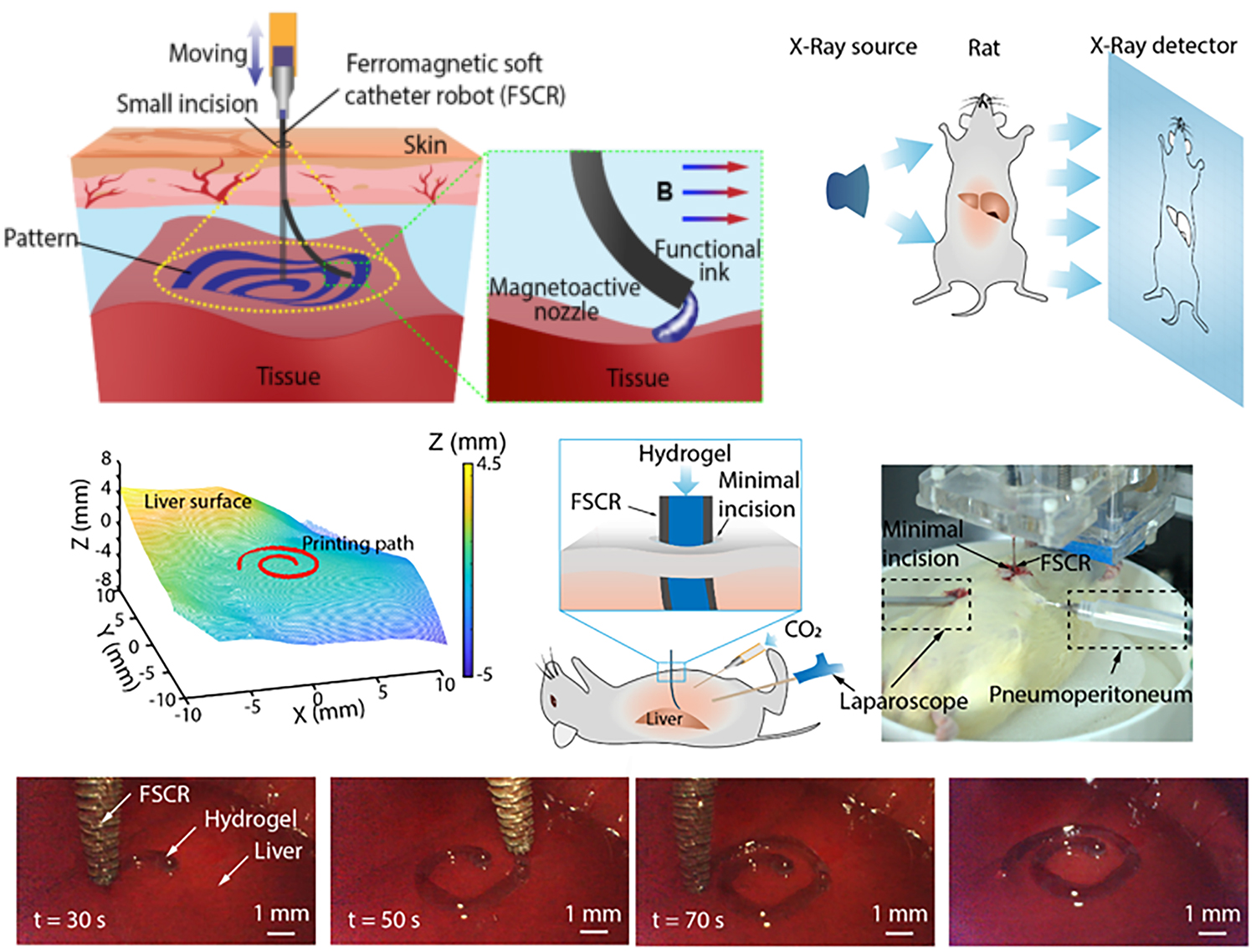In vivo bioprinting as a direct fabrication technique to create artificial tissues and medical devices on target sites within the bodies has enabled advanced clinical strategies. However, existing methods are often limited to applications near the skin or require open surgery for printing on internal organs, which in turn poses a higher risk of infection and prolonged recovery time for patients.

Figure 1 FSCR for in vivo minimally invasive bioprinting within a living rat
Recently, the research group from Huazhong University of Science and Technology published a paper on Nature Communications to target this problem. They reported a ferromagnetic soft catheter robot (FSCR) system capable of in situ computer-controlled bioprinting in a minimally invasive manner based on magnetic actuation. The FSCR was designed by dispersing ferromagnetic particles in a fiber-reinforced polymer matrix. This design resulted in stable ink extrusion and allowed for printing various materials with different rheological properties and functionalities. A superimposed magnetic field drove the FSCR to achieve digitally controlled printing with high accuracy. They demonstrated printing multiple patterns on planar surfaces, and considering the non-planar surface of natural organs. They then developed an in situ printing strategy for curved surfaces and demonstrated minimally invasive in vivo bioprinting of hydrogels in a rat model. This catheter robot approach will permit intelligent and minimally invasive bio-fabrication. The link for the full paper can be found at https://rdcu.be/cvA9K
The research group of Professor Jianfeng Zang from Huazhong University of Science and Technology was focused on the research of intelligent soft materials and devices for interdisciplinary biomedical engineering. Their research interest includes minimally invasive magnetic soft robots, wearable smart sensors, medical hydrogels, and new material additive manufacturing technologies. More than 70 papers have been published in international journals includingNature Materials(1),Nature Communications(3),National Science Review(1),Nano Letters(7). The perspective postdoctoral fellows and graduate students with background in electronics, optoelectronics, mechanical engineering, materials, physics and chemistry are welcome to apply. Please find more detailed information on Prof. Zang's homepage: http://faculty.hust.edu.cn/zangjianfeng
